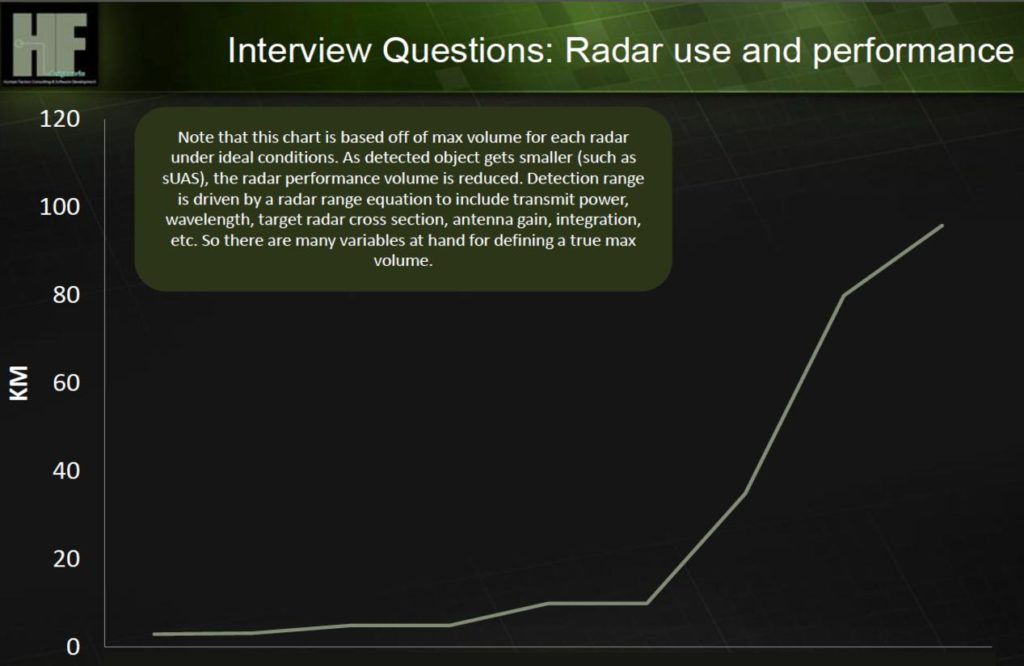Methodologies used for identifying and understanding today’s Ground Based Detect and Avoid systems
HF Designworks’ solution provides NASA, FAA, and industry with a further understanding of existing GBDAA systems for Unmanned Aircraft Systems (UAS) in the National Airspace System (NAS).
Technology Identification & Assessment:
Given the relationship between GBDAA requirements, radar state-of-the-art performance, and concepts of operations (CONOPS), an industry survey was performed. In addition to looking at industry, there was also interest in what technologies and procedures are in place at the FAA approved UAS test sites across the country.
Complex Engagement:
Not only was industry interviewed (including SRC, Echodyne, Seamatica, Air Force, DeTect, MIT Lincoln Laboratory, Skysense, MCR Solutions, Raytheon, Air Force, Fort Rucker, and the FAA) regarding their state of the art technologies for GBDAA and requirements, but five of the seven FAA approved UAS test sites were either visited, or in the case of the Alaska UAS Test Site a phone interview was conducted. The UAS test sites visited in person include New York, Nevada, Virginia, and North Dakota.
Integrated Analysis:
Interviews were conducted with technologists, vendors, organizations, and test sites. Questions were adjusted slightly for each group to better fit their needs. Each interview began by working with the technologist, vendor, organization, or test site to develop and illustrate a GBDAA CONOPS. This exercise was used to inform the interview questions.
“Today we are seeing a variety of CONOPS at test sites that are used with a variety of exciting systems and aircraft coming on line. Unfortunately there is currently no single set of requirements available to serve all these test sites and vendor systems.”
Scott Scheff, HF Designworks CEO
Detailed Findings:
Great work is being performed by organizations such as RTCA to bring together the right people to develop requirements and guidelines for successful integration of UAS into the NAS. However there is a challenge when the systems being created are being done so at the same time as the requirements are being generated. Oftentimes these are not joint efforts. There is also not a central source for requirements and those requirements that are available can be difficult to understand; making engineering design problematic. Additionally, each test site has its own needs and there is sometimes limited UAS collaboration among the sites.
Comprehensive Solutions:
We identified improvements to the technologies and requirements needed to successfully fly UAS in the NAS. Ground based radar fidelity will need to continue to improve, as will software interfaces (taking into account different classes and types of manned and unmanned aircraft in the airspace). Additionally, airborne radar systems will need to get smaller, lighter, and more energy efficient to support the smaller classes of UAS. Requirements will also need to be developed to support these technologies and use cases, especially those involving higher traffic areas with combinations of cooperative and non- cooperative aircraft.

